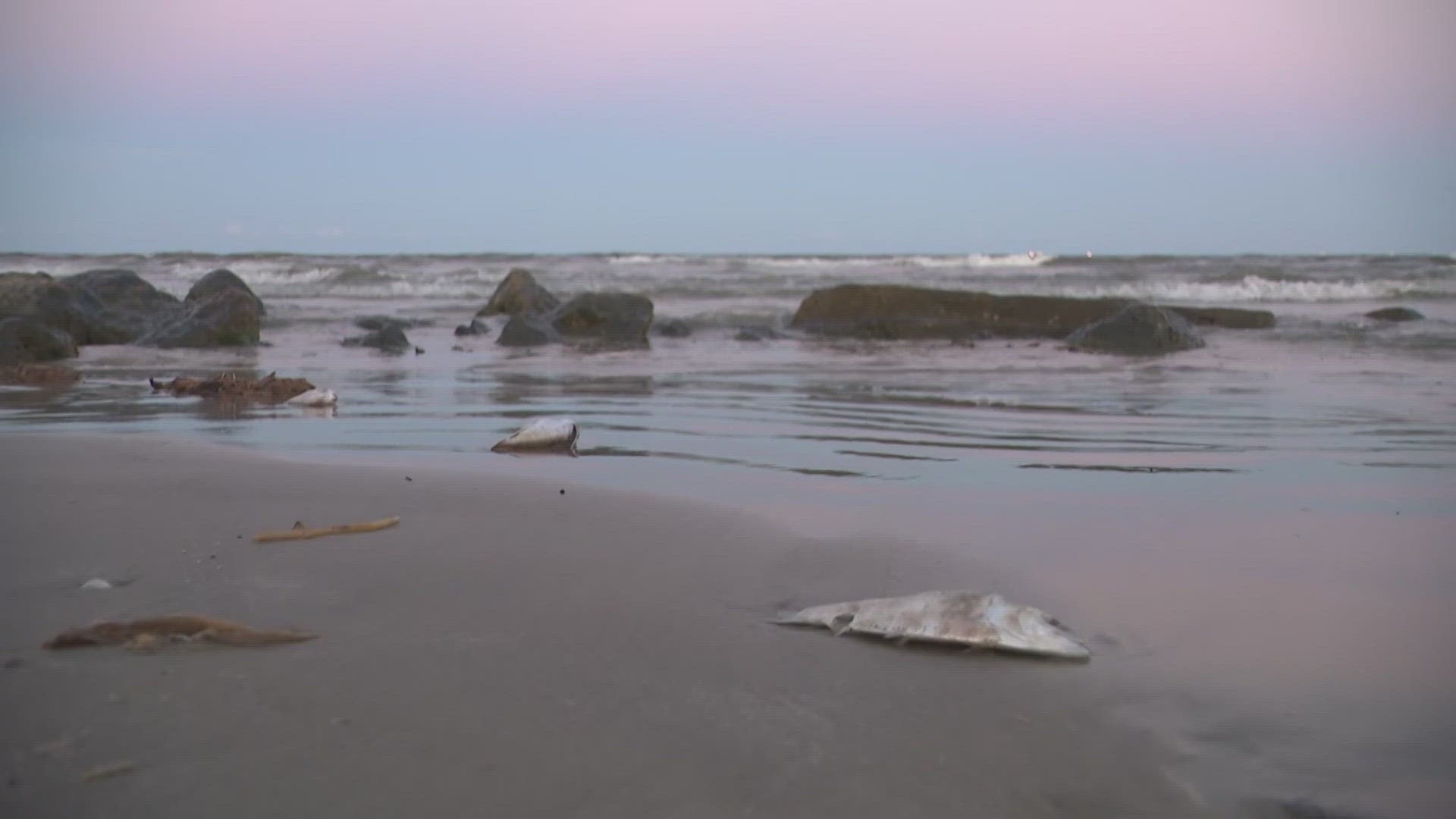GALVESTON, Texas — Several Gulf Coast beaches are experiencing what's known as a "red tide bloom."
The events aren't common on the Texas coast. The last one happened in 2016. Before that, there was one in 2011 and 2010.
When they do happen, they cause lots of problems for sea life and people.
The Brazoria County Parks Department said it canceled the weekend's annual Adopt a Beach event after the red tide washed ashore on Quintana and Surfside beaches. The parks department said staff members started coughing and having respiratory problems when they checked on the beach conditions on Thursday morning.
Where the algae blooms are present, there sometimes is a reddish, or rusty, tinge to the water. The blooms release toxins that become airborne when the waves crash on the shore. The aerosolized toxins irritate the respiratory system, causing coughing and sinus issues that can be worse for those with asthma and other medical conditions.
In the water, the toxins are deadly to fish and other marine life.
The Texas Parks and Wildlife Department reported this week that there were low concentrations of red tide in water samples taken from the pass near Galveston Bay and moderate levels in samples from the Texas City Dike. The department said it's still safe to eat fish, shrimp and crabs that are caught alive during a red tide.
Oysters are different, though. If they're harvested from the waters of a red tide, you can get neurotoxic shellfish poisoning, even if they're cooked. They can still be toxic even after the red tide has passed.

